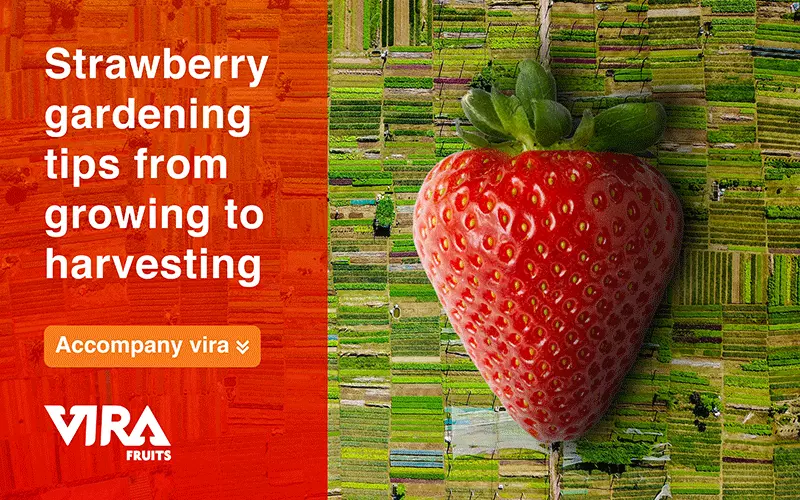Strawberries are not hard to garden. If you know and observe the tips about its different stages, you can easily succeed in strawberry gardening. This page should be sufficient for a beginner to obtain the basic knowledge for growing strawberries successfully.
Strawberry is one of the easiest plants to grow, and you can grow strawberries in modest yards or large gardens. Strawberry plants don’t require special equipment to grow.
A homegrown strawberry will always taste better than a store-bought one since producers gather them before they are ready. Moreover, fully ripened strawberries contain more sugar and have an aroma that is richer, resulting in a greater flavor.
There are three types of strawberry plants:
- June-bearing
Which usually takes three weeks to bear their fruits. These varieties, which are adapted to long days, produce buds and flowers in the autumn, fruits in the following June, and runners in the long summer days.
- Ever-bearing
Plants bearing an ever-bearing crop grow well in the spring, produce lightly in the summer and bear a second crop in late summer/fall. Summer and autumn are the seasons when these varieties form buds. Autumn buds produce fruit in the spring, and summer buds follow in the autumn.
- Day-Neutral
As long as the temperature remains between 1° and 30°C (35° and 85°F), Day-Neutral varieties produce fruit continuously from buds to fruits and runners until the first frost. Compared to June-bearing, production is lower.
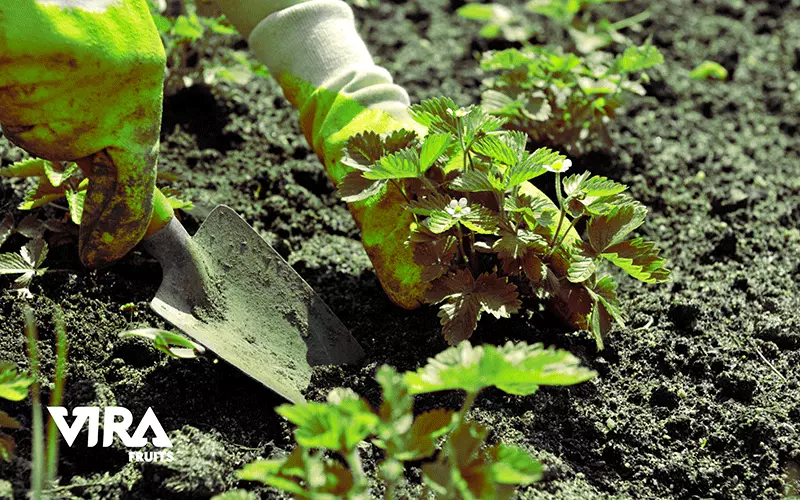
Planting strawberries
Strawberries are available as potted plants and plugs throughout the growing season; bare-root plants tend to be available later in the growing season as well as in early spring. Use a string line as a guide to make straight, neat rows by spacing plants 20 inches (50 cm) apart in each direction. When planting strawberries in pots, it is easiest to plant them at the same depth at which they were grown in their nursery trays.
As seeds grow, they send seedlings out that will then send out seedlings of their own. To ensure that the roots are accommodated without bending them, dig planting holes deep and wide enough. Don’t dig too deep, though! While the crown should be near the surface, the roots should be covered. Fresh air and light are essential for the growth of leaves, flowers, and fruit. Make sure to water the plants well as soon as they are planted. Planting them is a highly important step in strawberry gardening.
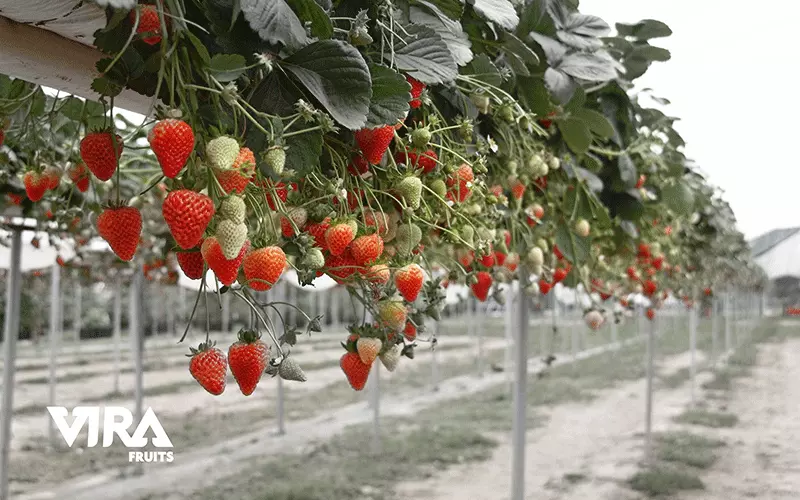
Growing strawberries
During dry weather and when plants are established, water them regularly. You should avoid wetting the leaves when watering to avoid spreading diseases. Adding general-purpose organic fertilizer to the soil before strawberries resume growth in the spring will replenish lost nutrients. Strawberries work hard to swell their fruit.
Early in the summer, before the fruits develop, tuck a mulch of straw around the plant. As a result, they will be blemish-free, and the weeds will be inhibited from growing, and the soil will retain its moisture. To encourage plants to produce more fruit, trim off any runner growth in the first year. Later, you can propagate new plants from the runners. A netting designed to exclude birds from your harvest and still allow insects to pass through is the best method for keeping your harvest safe.
When are they ripen?
Because strawberry sizes vary by variety, you can determine when the berries are fully ripe by observing their color. By the time they are ready to be picked, the fruit will transition from white to light pink plus white spots, to pale pink, to dark pink, to burgundy. Ideally, the berry should be red and firm when it is fully mature.
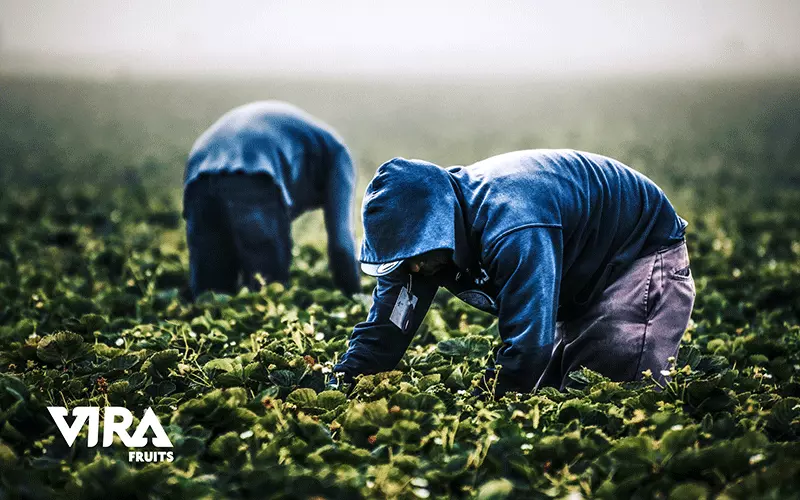
Harvesting strawberries
Temperatures between 60 and 80 degrees Fahrenheit are ideal for strawberry plants to produce flowers and fruit. Typically, this occurs from April to July, but in warm climates can last for the entire year. It is common for the most berries to be harvested in June during the growing season, which is why a subtype called June bearing strawberries exists.
Pick them gently to avoid bruises since strawberries can bruise very easily. To prevent diseases from entering the berry, the stem should not be eliminated completely. Rather than pulling on the berry, snap the stem directly above the fruit.
It is best to harvest in the evening when it is cooler. Compared to cool berries, warm berries are much softer and easier to bruise.
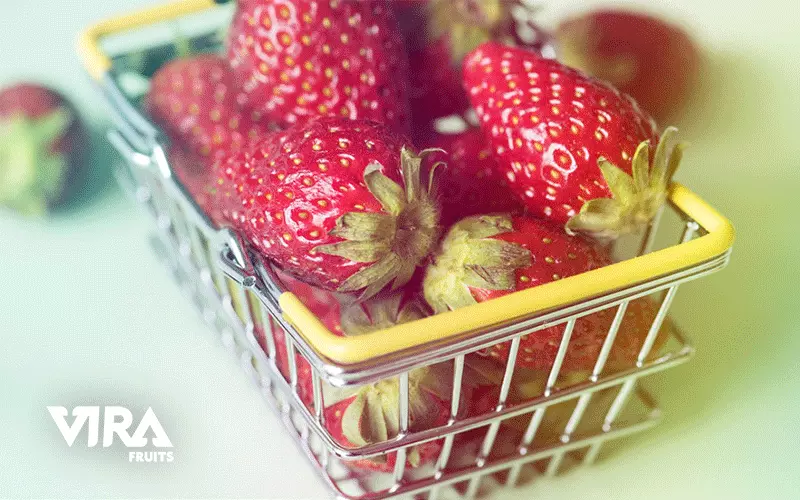
Storing strawberries
Strawberry shelf life is unfortunately quite short. After picking, they should be used as soon as possible. When they are harvested, they are still susceptible to bruises, so you should handle them gently. You should store them in a cool, dry location away from direct sunlight. Additionally, you should avoid rinsing them off until the time you want to use them. This is how easy strawberry gardening is.
